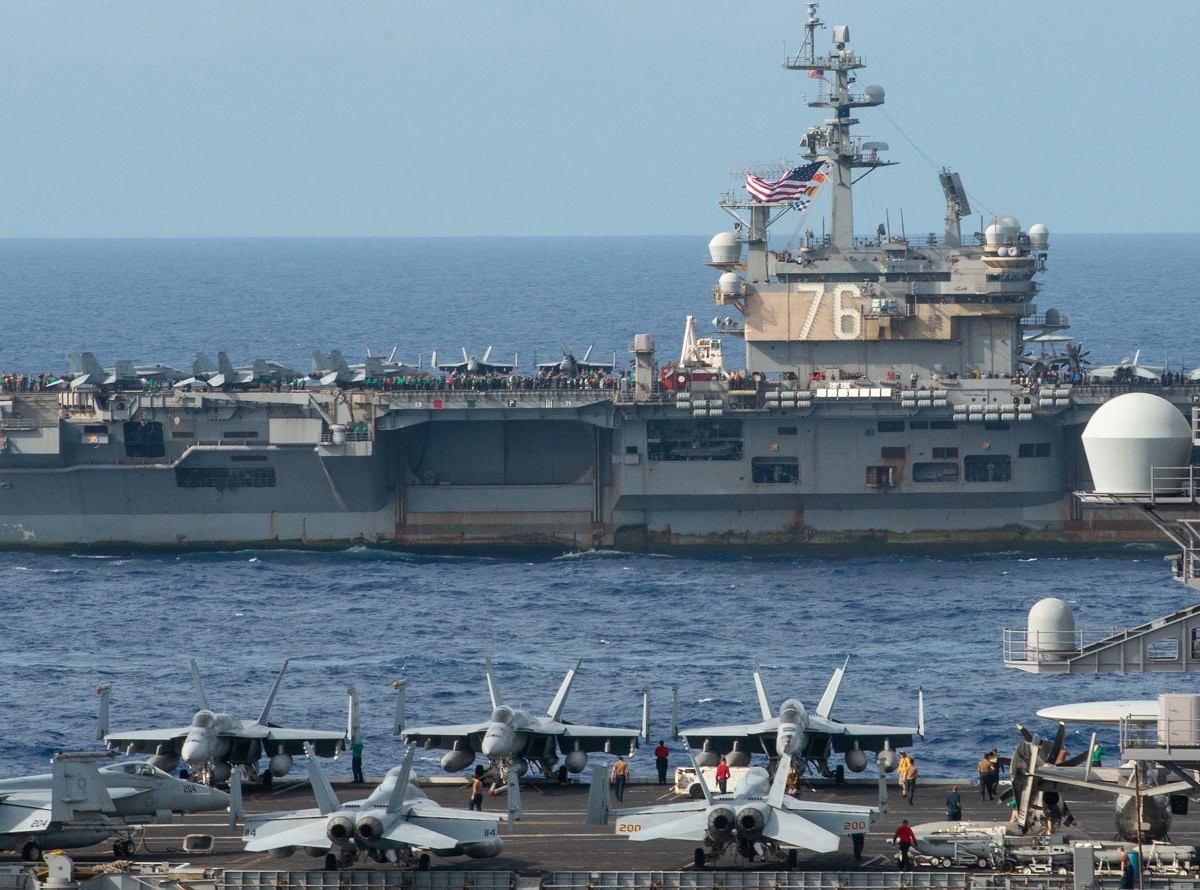The People’s Liberation Army Navy’s (PLAN’s) Shandong aircraft carrier strike group has been conducting maneuvers with Chinese warplanes near Taiwan’s air defense identification zone (ADIZ). The aircraft carrier, the first to be domestically built in China, transited through the Bashi Channel and entered the Western Pacific last week.
Its strike group reportedly consisted of multiple surface ships, including the carrier CNS Shandong (17), the destroyers CNS Guilin (164) and CNS Changsha (173), and frigates CNS Xuchang (536) and CNS Huangshan (570), and at least one supply ship. A suspected submarine was also part of the group.
On Wednesday, the Taiwanese Ministry of National Defense (MND) said via a press release that it had detected 43 People’s Liberation Army aircraft over the past day.
Thirty-seven of those aircraft – including six Sukhoi Su-30, sixteen Shenyang J-16, four Chengdu J-10 fighter jets, four Xi’an H-6 bombers, two Shaanxi KJ-500 early warning and control aircraft (KJ-500 AEW&C), one Shaanxi Y-9 communication countermeasure (Y-9 CC) aircraft, one Shaanxi Y-8 electronic intelligence (Y-8 ELINT) spotter plane, one Guizhou WZ-7 Soaring Dragon reconnaissance unmanned aerial vehicle (WZ-7 UAV RECCE), and two Xi’an Y-20 aerial refueling aircraft. – reportedly crossed the so-called median line of the Taiwan Straits and entered the self-governing island’s ADIZ.
What Will the Reagan Do?
The Chinese naval exercises came as the U.S. Navy’s only forward-deployed aircraft carrier USS Ronald Reagan (CVN-76) arrived in Manila, Republic of the Philippines, for a scheduled port visit on Saturday. The Nimitz-class aircraft carrier was joined by the Ticonderoga-class guided-missile cruisers USS Robert Smalls (CG-62) and USS Antietam (CG-54).
The nuclear-powered aircraft carrier last visited Manila in October 2022. Its arrival in the Philippine capital was planned in advance and was not a response to the latest flare-up between Beijing and Manila.
However, it did send the message that the U.S. would help defend the Philippines in case of an armed attack following an incident that saw Chinese ships attempt a blockade and subsequently collided with two Filipino vessels near the contested Second Thomas Shoal in the South China Sea last month.
USS Ronald Reagan’s visit follows another port call to the South Korean port of Busan last month and conducted joint maritime drills with the South Korean Navy and the Japanese Maritime Self Defense Force. CVN-76 had last visited South Korea in 2022 for the first time in about four years, joining other military vessels in a show of might intended to send a message to North Korea.
Now USS Ronald Reagan could be sending a similar message to Beijing that the U.S. will support a free and open Indo-Pacific. In September, Ely Ratner, assistant secretary of defense for Indo-Pacific Security Affairs warned that China is “the only country with both the will and, increasingly, the capability to overturn the international order and refashion the international order to suit its authoritarian interests in ways that would undermine the interests of the United States.”
As a result, the U.S. has sought to improve military-to-military relations with the Philippines, Australia, New Zealand, Indonesia, Vietnam, and the other countries of the Association of Southeast Asian Nations organization.
The U.S. Navy’s Carl Vinson CSG – the carrier USS Carl Vinson (CVN-70) and 10 other ships – is also heading to the region, and along with Australian and Canadian naval forces will take part in the Japan Maritime Self Defense Force (JMSDF) Annual Exercise 2023 held from November 10 to the 20 in Japan’s seas and airspace.
Author Experience and Expertise:
A Senior Editor for 19FortyFive, Peter Suciu is a Michigan-based writer. He has contributed to more than four dozen magazines, newspapers, and websites with over 3,200 published pieces over a twenty-year career in journalism. He regularly writes about military hardware, firearms history, cybersecurity, politics, and international affairs. Peter is also a Contributing Writer for Forbes and Clearance Jobs. You can follow him on Twitter: @PeterSuciu.
From the Vault

